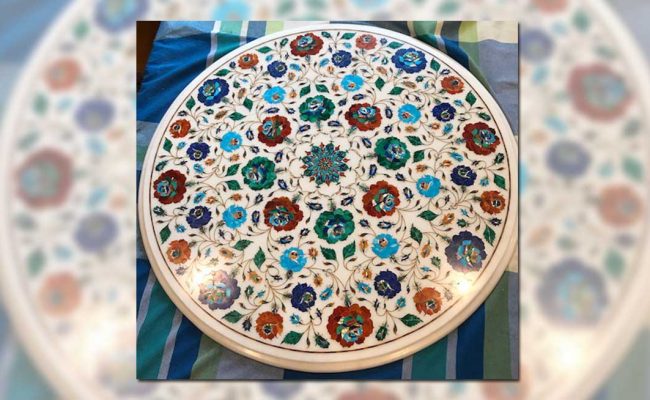Marble, with its elegant veining and timeless charm, is a beloved material for countertops, flooring, and sculptures. However, even the most robust marble can succumb to cracks and chips, marring its pristine appearance. If you’re faced with this distressing sight, don’t despair. Restoring cracked marble is possible, and with the right techniques, you can bring back its former glory.

Image: restorationbydesignstone.com
Understanding Marble Cracks
Before embarking on repairs, it’s crucial to understand the nature of marble cracks. Cracks can arise from various factors, including impact, thermal stress, and aging. Superficial cracks only affect the surface layer, while deeper cracks penetrate the stone. Thoroughly assessing the extent and depth of the cracks is paramount before selecting the appropriate repair method.
Repairing Superficial Cracks
Superficial cracks, also known as hairline cracks, are typically shallow and span the surface of the marble. Repairing these cracks is relatively straightforward and can be achieved using a few simple techniques:
- Epoxy Resin: Epoxy resin is an excellent solution for filling hairline cracks. It’s a durable, transparent adhesive that perfectly matches the glossy finish of marble. To use epoxy resin, simply mix the two components, fill the crack, and let it cure for 24 hours.
- Marble Putty: Marble putty is a moldable compound designed specifically for repairing cracks in marble. It comes in a variety of colors, making it easy to match the shade of your marble. Apply the putty to the crack and smooth it out using a putty knife or your finger.
- Super Glue: For very small, hairline cracks, super glue can provide a quick and easy fix. Simply apply a small drop to the crack and let it dry. However, super glue is not as durable as epoxy resin or marble putty, so it may require reapplication over time.
Mending Deeper Cracks
Repairing deeper cracks requires a more involved approach. These cracks often penetrate through the entire thickness of the marble, making them more noticeable and difficult to conceal. Additionally, deeper cracks can weaken the structural integrity of the marble, so it’s crucial to address them promptly.
For deep cracks, you’ll need to use a combination of techniques to ensure a lasting repair:
- Pinning: Pinning involves drilling small holes at the ends of the crack and inserting stainless steel pins or dowels. This creates a mechanical bond that helps to hold the crack together.
- Epoxy Injection: Epoxy injection is a highly effective method for filling deep cracks. A low-viscosity epoxy is injected into the crack under pressure, filling all the voids and strengthening the marble. This technique is often used in conjunction with pinning.
- Routing and Filling: For very deep or wide cracks, routing and filling may be necessary. This involves creating a groove along the crack and filling it with epoxy resin or marble putty. The groove can be made using a handheld router or a diamond-tipped saw.
![Amazing Damaged Marble Fix [Video] | Diy techniques and supplies, Diy ...](https://i.pinimg.com/736x/0e/8c/d4/0e8cd46f839e40941a5a62be851d42fd.jpg)
Image: www.pinterest.com
Tips and Expert Advice for Marble Crack Repair
To ensure a successful marble crack repair, follow these expert tips:
- Clean the Crack: Before filling the crack, clean it thoroughly using a degreasing agent and a soft cloth. This removes any dirt or debris that could interfere with the adhesion of the repair material.
- Use the Right Materials: Choose a repair material that is appropriate for the type and depth of the crack. Epoxy resin and marble putty are ideal for hairline cracks, while pinning and epoxy injection are better suited for deep cracks.
- Allow the Repair to Cure: Allow the repair material to cure according to the manufacturer’s instructions. This is crucial for ensuring a strong and durable bond.
- Seal the Repair: Once the repair is complete, seal it using a marble-specific sealer. This will protect the repair from moisture and stains.
FAQs on Marble Crack Repair
Q: Can I repair marble cracks myself?
A: Yes, it is possible to repair marble cracks yourself using the techniques described above. However, for deep cracks or complex repairs, it’s recommended to consult a professional marble restorer.
Q: How much does it cost to repair a marble crack?
A: The cost of marble crack repair varies depending on the size, depth, and location of the crack. Simple repairs can cost around $50-$150, while more complex repairs can range from $200 to $500 or more.
Q: How do I prevent marble cracks in the future?
A: To prevent marble cracks, handle marble objects with care, avoid placing heavy objects on marble surfaces, and protect marble from extreme temperatures. Regular cleaning and sealing also help to maintain marble and reduce the risk of cracks.
How To Fix Cracked Marble
Conclusion
Restoring cracked marble requires patience, precision, and the right techniques. Whether you’re dealing with a small hairline crack or a deep fissure, following the steps outlined in this article will help you restore the beauty of your marble and preserve its value for years to come. If you’re hesitant about tackling the repair yourself, don’t hesitate to seek the assistance of a professional marble restorer.
Have you ever had to repair a cracked marble surface? Share your experiences and questions in the comments below, and I’ll be happy to assist you.